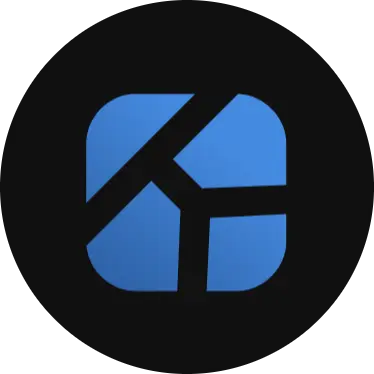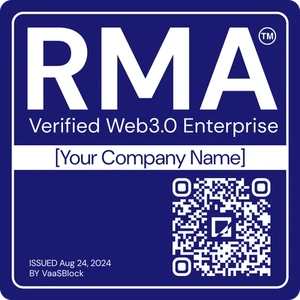
KOLZ
Risk Management
?Risk Management
The RMA™ is a blockchain credibility certification assessing governance, transparency, security, and results, providing trusted verification for businesses in Web3.
Verification of 6 major compliance criteria.
RMA™ Status: 🚧 Audit Underway
Verification of 6 major compliance criteria.
Technology
?Technology
A collection of public facing information, data collected through partners and our own tools view we present a projects technology in one place for easy verification.
Analysis and testing of tech infrastructures.
Marketing
Alpha?Marketing
Top level look at a projects marketing capablities currently in alpha this section will grow to show quickly how a project promotes itself and the effectiveness.
Screening of user base and community feedback.
Background
?Background
Using multiple public facing sources across the web view a summary of a projects purpose, key achievements and general overview.
Collection of basic administrative documentation.
Risk Management
Last Updated
2025/4/16
Transparency
Transparency Score
Algorithmic assessment of a project’s transparency level, using multiple public data points to measure its commitment to compliance, documentation, and clarity in communication.
Transparency Score
Category Rank
A ranking that positions the organization among its industry peers, evaluating its relative performance based on key compliance, credibility, and transparency indicators.
Category Rank
KOLZ vs Artificial Intelligence (AI)
VaaSBlock Rank
A global ranking that compares the organization against all entities listed on VaaSBlock, reflecting its overall credibility, transparency, and operational performance versus the full Web3 ecosystem.
VaaSBlock Rank
KOLZ vs All Listed Organizations
Transparency
Transparency Score
Transparency Score
Algorithmic assessment of a project’s transparency level, using multiple public data points to measure its commitment to compliance, documentation, and clarity in communication.
Category Rank
KOLZ vs Artificial Intelligence (AI)
Category Rank
A ranking that positions the organization among its industry peers, evaluating its relative performance based on key compliance, credibility, and transparency indicators.
VaaSBlock Rank
KOLZ vs All Listed Organizations
VaaSBlock Rank
A global ranking that compares the organization against all entities listed on VaaSBlock, reflecting its overall credibility, transparency, and operational performance versus the full Web3 ecosystem.
RMA™
🚧 Audit UnderwayCorporate Governance
The verification of fundamental governance, organizational structure, including verifying the entity’s legal registration and adherence to local laws and regulations.
Corporate
Governance

Team Proficency
Evaluation of an organization’s personnel, ensuring that crucial team members possess the expertise and dedication necessary to execute current business models and scale effectively.
Team
Proficiency

Technology & Security
Assessment of the organization’s technological framework, including blockchain integrations (where relevant), system architecture, and overall IT infrastructure.
Technology
& Security

Revenue Model
Comprehensively evaluation of a company’s income-generating strategies (how do they make or intend to make money), ensuring financial robustness and sustainability.
Revenue
Model

Results Delivered
The Results Delivered component of the RMA™ audit comprehensively evaluates an organization’s ability to achieve its goals and honor its commitments.
Results
Delivered

Planning & Transparency
The Planning and Transparency component of the RMA™ audit offers a thorough assessment of how an organization manages its workflow and prepares for unexpected challenges.
Planning &
Transparency

Technology
Website
Domain First Registered – June 2024
SSL Status – ✔ Secure
Source Code
N/A
Marketing
Marketing Effectiveness
This score assesses the impact of detected marketing activity and the corresponding price movement of a token. The score understands whole market movements to ensure tokens are assessed fairly against peers.
Marketing Effectiveness
Confidence Index
This index determines our confidence in the score we have given. Generally, as more data is collected, the confidence index will increase. If a project has lots of activity, this confidence is earned faster.
Confidence Index
VaaSBlock Rank
This identifies where a project sits compared to all projects accessed for Marketing Effectiveness.
VaaSBlock Rank
KOLZ vs All Listed Organizations
Marketing Effectiveness
Marketing Effectiveness
This score assesses the impact of detected marketing activity and the corresponding price movement of a token. The score understands whole market movements to ensure tokens are assessed fairly against peers.
Confidence Index
Confidence Index
This index determines our confidence in the score we have given. Generally, as more data is collected, the confidence index will increase. If a project has lots of activity, this confidence is earned faster.
VaaSBlock Rank
KOLZ vs All Listed Organizations
VaaSBlock Rank
This identifies where a project sits compared to all projects accessed for Marketing Effectiveness.
No Chain No Gain™ Podcast ⛉
This Organization is yet to join the No Chain No Gain™ Podcast and share insights on what makes their business trustable and innovative.
💡 NCNG generated over 1 Million impressions in its first six months of existence.
PR Impact
PR Impact
VaaSBlock provides estimations to the impact that traditional digital media can have on a project. This is an early release; more areas of PR are planned in future versions.
Search Terms ? Search TermsThese are the terms we discovered the article for on page one of Google. | Est. Traffic ? Estimated TrafficWe estimate how much traffic an article will get. Generally, our estimations are slightly higher than those of more established tools. We are working on the algorithm all the time, and results could change. | Est. Value ? Estimated ValueBased on the estimated traffic we generate an estimation for what this traffic would have cost to generate if you tried to target these users with ads. The positions for the article on google and the location of the traffic are the major factors in this estimation. | |||
|---|---|---|---|---|---|
Prendre un rendez-vous en téléconsultation avec le Dr. Philippe Kolz : Médecin spécialisé dans la ville de Marseille 03 | MEDADOM source: medadom.com | Prendre un rendez-vo… — Prendre un rendez-vous en téléconsultation avec le Dr. Philippe Kolz : Médecin spécialisé dans la ville de Marseille 03 | MEDADOM source: medadom.com | Organic | medadom.com | ||
Cours KOLZ : Graphique de cours KOLZ en direct, Capitalisation et Actualités | CoinGecko source: coingecko.com | Cours KOLZ : Graphiq… — Cours KOLZ : Graphique de cours KOLZ en direct, Capitalisation et Actualités | CoinGecko source: coingecko.com | Organic | coingecko.com | ||
Familles Kolz : avis de décès et avis d’obsèques – Libra Memoria source: libramemoria.com | Familles Kolz : avis… — Familles Kolz : avis de décès et avis d’obsèques – Libra Memoria source: libramemoria.com | Organic | libramemoria.com | ||
Kolz Kolz source: Journalducoin | Kolz Kolz… — Kolz Kolz source: Journalducoin | Organic | journalducoin.com |
| Est. Traffic | Est. Value | ||
|---|---|---|---|
Prendre un rendez-vo… — | |||
Cours KOLZ : Graphiq… — | |||
Familles Kolz : avis… — | |||
Kolz Kolz… — |
Background
Organization Name – KOLZ
Category –  Artificial Intelligence (AI)
Artificial Intelligence (AI)
About
powered by irmaAI
irmaAIKOLZ.chat is described by its own promotional materials as a “Web3-native, AI-powered influencer-marketing platform” that turns high-profile Key Opinion Leaders into tireless digital ambassadors w…ho chat with fans or promote brands around the clock, yet the company also concedes that the product is still maturing, so most of what follows is based on its public claims rather than independent verification. According to its homepage and documentation, the basic promise is straightforward: an influencer supplies approved content—tweets, podcasts, articles, and AMA transcripts—and KOLZ.chat builds a conversational “replica” that mirrors the influencer’s style and expertise, letting followers ask questions at any hour while brands rent that replica for campaigns without scheduling headaches.  
Proponents argue that this always-on approach solves two pain points. First, fans accustomed to real-time dialogue in crypto forums often wait hours or days for a reply on X (formerly Twitter), diluting the very immediacy that drew them to social media. Second, marketers complain that one-off sponsored tweets are costly and short-lived; a persistent replica, they contend, could field product questions, direct users to affiliate links, and collect feedback long after a live post has scrolled away. Because the agent is supposedly trained on the influencer’s own canon, supporters say the experience feels personal even though the human is offline, and they add that smaller influencers could monetize deep niche knowledge without needing the massive reach that conventional agencies demand. 
The company’s FAQ details a three-step pipeline that it claims keeps each bot “on brand.” First, ingestion software “vectorizes” the influencer’s approved corpus and stores the resulting embeddings in a vector database. Next, a large-language model is fine-tuned—KOLZ.chat does not publish architecture specs but credits Sensay for core AI infrastructure—and the influencer spends a calibration period approving or rejecting responses until satisfied that the bot will not mis-represent sensitive opinions. Finally, the replica is deployed across websites, Telegram, or Discord so communities can launch perpetual “ask me anything” sessions. The team cautions that hallucinations can occur and urges creators to review output before going live, underscoring that the system is not yet foolproof.  
Financing these interactions is the project’s native utility token, ticker $KOLZ. The documentation presents it as an Ethereum-based asset that settles subscription fees, unlocks premium replica features, and rewards users who contribute high-quality training data. A tokenomics sheet shows planned allocations for liquidity, presale, operations, and community rewards, with vesting schedules that purport to tie unlocks to marketing performance. Independent analysts note that the token trades at fractions of a cent with thin volume, leaving real-world utility contingent on wider adoption. Future possibilities, the team says, include staking pools that share replica revenue with token holders and loyalty tiers that grant holders early access to new influencer bots.   
In its go-to-market narrative, KOLZ.chat lists three software-as-a-service tiers—Starter, Pro, and Enterprise—each charging a monthly license plus a percentage of replica-generated advertising or affiliate revenue. Brands, for their part, are told they can “rent” a replica for limited-time education campaigns, paying either fiat or $KOLZ, with token payments receiving unspecified discounts. Although these fee structures are touted as more predictable than bespoke influencer deals, the company has not yet released audited revenue figures or case studies to validate the economics, so prospects must take the savings on trust for now. 
A technical white-board sketch in the docs outlines an architecture that blends retrieval-augmented generation with an on-chain provenance layer. When a user sends a question, a prompt router allegedly selects the most relevant passages from the influencer’s knowledge base, feeds them to the inference engine, and then signs the output with the influencer’s Ethereum wallet to produce a tamper-evident hash. By writing that hash to a public chain, KOLZ.chat claims to guarantee that no third party—including KOLZ itself—can quietly edit or forge a reply after the fact. Security researchers have yet to publish an external audit confirming that the contracts work as intended, and the company acknowledges that formal verification is “forthcoming.” 
Supporters highlight four headline benefits: scalability that frees influencers from repetitive Q&A; round-the-clock brand activation that covers all time zones; conversation analytics dashboards that ostensibly surface trending topics and conversion funnels; and lower barriers for micro-experts who want to commercialize deep but narrow insights. These advantages remain primarily anecdotal—press releases tout improved engagement and new revenue streams, but peer-reviewed studies are absent—and skeptics question whether chat transcripts alone can translate into meaningful brand lift without human storytelling. 
Potential concerns are manifold. Representation accuracy looms largest: a bot that misstates financial advice could expose both the influencer and the sponsoring brand to reputational or even regulatory fallout, especially in jurisdictions that scrutinize unlicensed investment commentary. Data privacy raises another flag, because users may reveal trading strategies or personal details in chats that, while “on-chain” for transparency, could also become immutable liabilities. Token volatility presents a third risk; if liquidity dries up, discounts for paying with $KOLZ may evaporate just when brands are trying to scale campaigns. Finally, because influencer loyalty is famously fickle, critics argue that a better-funded social network could roll out native replicas and erode KOLZ.chat’s early mover advantage overnight.
The roadmap published in early 2025 cites three near-term milestones: a public marketplace where brands browse and book replicas, tokenized verification badges that confirm an agent’s authenticity, and multilingual models to expand beyond English and Korean. It also hints at a pilot program with esports figures but leaves partner names confidential, framing these plans as “coming soon” rather than contractual commitments. Linkedin updates reference future features like replica NFTs and liquidity pools, yet they, too, lack hard delivery dates, so observers may wish to monitor progress before staking significant capital, time, or reputation on the ecosystem.  
Taken together, KOLZ.chat positions itself at the intersection of influencer culture, generative AI, and token-driven network effects, selling a vision in which digital stand-ins handle the grind while humans reclaim creative freedom. The pitch—“earn while you sleep” for creators and “engage any time” for audiences—resonates with Web3’s always-on ethos, but much hinges on execution. Nearly every bold feature remains gated by pending audits, untested economic incentives, and the delicate task of translating an influencer’s voice into code without losing authenticity. For readers evaluating the platform today, it may be prudent to treat the company’s statements as forward-looking rather than guaranteed, tracking how its technology, token, and governance mature in the coming quarters. Read More
Creation Date
December 2025
Headquarters
–
Organization Maturity Level
Early-Stage
RMA™ Type
Self-Assessment
Useful Links
Website – kolz.chat
Notable Achievements
2024
Project Launch
2024
Raised 200KUSD from pre-seed and seed rounds













